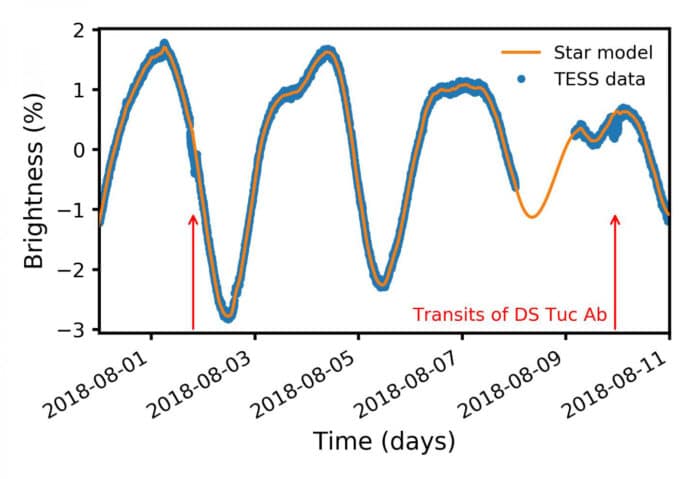Young exoplanets are snapshots of the planetary evolution process. Planets that orbit stars in young associations are particularly important because the age of the planetary system is well constrained.
Scientists presented a discovery of a transiting planet larger than Neptune but smaller than Saturn, orbiting one of the brightest young stars known. Aged almost 45 million years of old, the star and its planet could give significant data on how planetary bodies form.
Scientists observed this exoplanet in the Dartmouth research – known as DS Tuc Ab. The planet is no longer growing, but, because of its young age, it is still undergoing rapid changes like losing atmospheric gas as a result of the radiation coming from its host star.
Elisabeth Newton, an assistant professor of physics and astronomy at Dartmouth College said, “One of the overall goals of astronomy is understanding the big picture of how we got here, how solar systems and galaxies take shape and why. By finding solar systems that are different from our own – especially young ones – we can hope to learn why Earth and our own solar system evolved in the ways that they did.”
Located about 150 light-years away from Earth, the planet has two suns and makes one full orbit around its main star in just eight days. First observed by NASA in 2018, its existence was confirmed by the Dartmouth team in March using data from NASA’s Spitzer Space Telescope and other ground- and space-based observatories such as the South African Large Telescope (SALT).
Newton said, “We were really excited when we confirmed this discovery because the planet orbits such a bright, well-known young star. Our whole team worked together to learn everything we could about this solar system.”
“The star’s brightness lets us study the planet in detail because the more photons you have the better statistics you have. A discovery of this sort with such a unique age and an unusual planet size would not be possible without TESS.”
Planets are bigger when previously framed and are thought to become after some time as they cool and lose atmosphere. Since this planet is as yet shaping, the team would like to identify climate evaporation in real life. Understanding this process could enable specialists to foresee what may happen to the exoplanet throughout the following billions of years and can likewise be utilized to see how atmospheric getaway may have influenced older planets, including Earth.
Newton said, “We hope that by seeing this planet’s atmosphere, we can provide a snapshot of what planets look like at a young age.”
